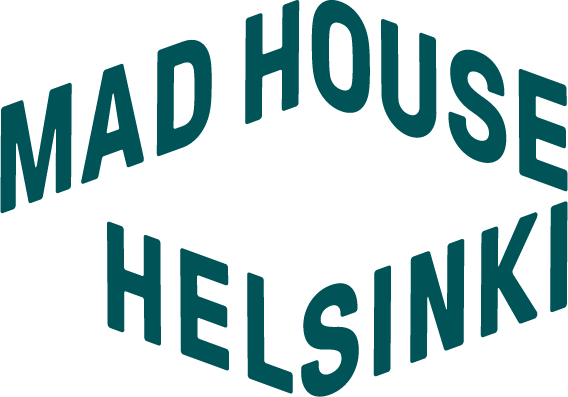Interview with Hunajanjyvä
Visual artist Sadet Hirsimäki and sound artist Eero Pulkkinen were on Thursday 5 October preparing for Saturday's Honeycomb performance. PHOTO: JUHANI NIIRANEN / HS - Read the full article in Helsingin Sanomat.
Mad House Helsinki: How did you originally find Kauttua, where Hunajanjyvä was born? Where did the idea for Hunajanjyvän come from?
Hunajanjyvä: We had been thinking about moving to the country for a while. When the pandemic eased, we gave up our apartment in Helsinki and went to live in the family cottage for a month. On the way past Ruukinpuisto, we heard a tip that there were really cheap rental apartments available. We were looking for space and a forest, as we had lived in a studio apartment in Vallila during the pandemic. We made a 3-month lease to Kauttua, but then extended it for a year. During those times we were able to work remotely and it felt important to relax.
We cycled around the village of Kauttua and saw a lot of empty premises. We found out that compared to Helsinki, there are all kinds of possibilities, and we also got a free workroom from the municipality, a grain mill, where mice were living and there were still grains dripping from the ceiling onto the floor. Slowly, we also got to know the local artist community and individual artists.
We were invited to a yard exhibition by local artist Annette Juusela, and we thought that since we had moved there, we would not only go to the countryside to enjoy the peace of the forest and focus on our own artistic work, but also do something together. The idea of Hunajanjyvästä developed while walking around in different places and thinking about whether we could work together properly for the first time.
MD: In October 2023, Hunajanjyvä organised the Lightning and Earth performance evening at the new Mad House Helsinki, which featured five of your curated artists (nenúhîr, Hevonen, Antti Tuomento, Daniele Willis, Tari Doris) and the evening as a whole included many other performance elements. How was this ensemble selected?
H: The idea was to have different styles of works in the whole, and to have works developed in their own space and sections scripted for the event in the same event. The light and sound design also developed partly independently, of course aware of the course of the evening. We did not rehearse the whole performance once. This was actually a choice related both to time management and to the themes to be addressed in the performance. The show also deals with the passion for making art, which rarely meets the resources available.
Some of the elements of the presentation had already been tied together in the planning meetings. We had talked to all the artists about the ensemble and the story, and of course we asked them if they would like to perform their own work or be part of the ensemble. All were willing to go out and build their performances around the theme and story. However, on the night of the performance, the pieces came together for the first time as a continuum. It was nice that the intuitive trust in the moment and in the work of the artists made the evening meaningful despite, and partly because of, the tension and unpredictability.
As we considered the concept and organisation of the cultural space and the Artist's House as envisioned by Antti Tuomenno, it seemed important to maintain freedom and the possibility for change and audience participation in the structure of the performance. In this way, reflection and possible realisation could continue during the evening of the performance.





MH: How does it feel to work in Helsinki with a concept that was born in Kauttua?
H: Good. Kauttua had a strong presence in the evening and in its construction. Compared to our previous events, the Mad House performance night was different in its own way, if only because of the space and location of the stage, and therefore special. Next we will be looking for work in Tuustaipalee and Parkano. We were also invited to the Norberg Festival in Sweden, if they get a grant.
MD: Honeycomb is also doing an online piece for Mad House's online edition, which will be published in December 2023 - what will you experience there? What is the relationship between the online work and the performances?
H: The online article introduces a new event space, Riista Live, opening in Kauttua Forest. The new performance space, where artists will perform under the gaze of a game camera, was already mentioned in the Lightning and Earth presentation. We find it strange that empty spaces in Kauttua, for example, are not being made available to local artists, even though they are being encouraged to enliven the old Ruuk area. However, the work, which comments on the nuanced and stingy role of spaces for art, performance and studios in urban and village planning, is essentially optimistic. In our online work, artists make use of game camera technology. At our performance night at Mad House, actress Alisa Alho introduced the concept to the audience while simultaneously acting on the game camera and collecting sign-ups from the audience for an upcoming performance night and to perform in front of the game cameras. Riista Live will take place both on-site in Kauttua and virtually as a stream, which can be watched from anywhere.





















